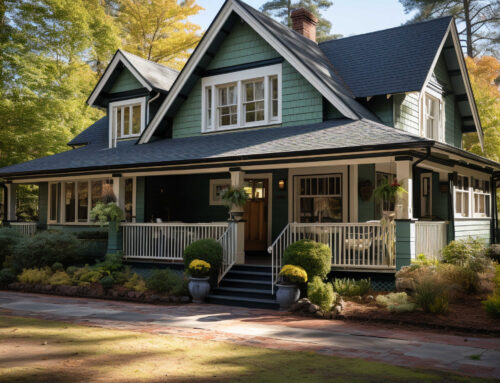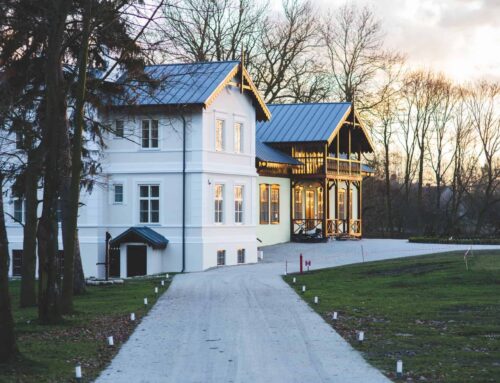Are you buying the RIGHT TIC property? Check the TOP five (5) factors you should not miss to increase your exposure for condo conversion!
As you browse the internet for your future home or talk to a realtor for practical real estate options, you may have come across a Tenancy-In-Common property. It is a unique and unconventional way of real estate ownership in San Francisco. With San Francisco’s skyrocketing housing prices for single-family homes and condominiums, Tenancy-In-Common provides an excellent alternative property type to enter the San Francisco real estate market.
Aside from lower price points, one of the attractive features of a TIC property is the opportunity for condo conversion. Imagine acquiring a property at a lower price and eventually converting it to a condo unit with a higher market value! And once you have successfully converted, you will enjoy a good return on investment (ROI), and your property will be free of the stringent rent control ordinances imposed in San Francisco.
But not all TICs are made equal. Some TICs have a higher chance of converting into a condo unit, while others are permanently disqualified from converting. So the real question is, are you buying the right TIC property? How do you ensure a high chance of getting converted when you buy a TIC property? Let’s find out.
Understanding the TIC – Condo conversion process
Before the recent changes in the condo conversion process, a TIC building would fall into two (2) categories. The first is the 2-unit bypass system with two unrelated, owner-occupied units. A 2-unit bypass is only applicable if the building has a clean eviction history and the units are both occupied by the owners for at least a year. The second one is the government lottery system for 2-unit buildings up to 6-unit buildings that are tenant occupied.
In 2013, the Board of Supervisors enacted changes in the conversion process and suspended the lottery system until 2024. They then replaced it with the Expedited Conversion Program (ECP) effective until 2023 or until the previous lottery system resumes. For a TIC building to qualify, it must have (1) 6 units or fewer, (2) at least partially owner occupied, (3) a minimum of three years length of occupancy, and (4) have a written TIC agreement in place as of April 1, 2013. All buildings formed without a signed TIC agreement after April 2013 may no longer qualify for condo conversion and will have to wait for the city lottery to return. Take note that only the lottery system is affected by the changes. Rules for the 2-unit bypass remain the same.
Every year, a maximum of 200 units may successfully convert into a condominium through the lottery system, which is equivalent to 55-70 buildings, depending on the total number of dwellings in the winning buildings. Since 2009, there have been 4,964 condominium conversions through Public Works (DPW).
Top Five (5) Factors affecting successful TIC- Condo conversion
- Past Eviction History
Under San Francisco’s condo conversion laws, a building’s eviction history can disqualify or delay the building’s eligibility to convert for condominiums. It means that if you have acquired a building with tenants that have either been evicted or paid out to move by the previous owner, there is a high possibility that the building will not be allowed to convert to a condominium or to enter the condo conversion lottery. In addition, there are specific rules relating to the eviction history, such as:
- Who was evicted? Did they belong to “Protected Tenants,” e.g., disabled, 60 years or older, or have lived in the property for over ten years? Eviction of Protected Tenants has more impact on your condominium conversion vs. non-protected tenants.
- What is the legal basis for eviction? Is it a “No Fault Eviction” wherein the ground for eviction is that the owner moved in, the owner wanted to rehabilitate the unit, or the owner wanted a relative to move in?
- Tenant Buyout History
In some cases, a tenant may voluntarily leave their unit in exchange for money or other considerations from a building owner. This arrangement is known as a tenant buyout which can affect the building’s eligibility for condominium conversion. Starting in March 2015, the San Francisco Rent Board requires all tenant buyouts to be reported and meet other specific requirements. A tenant buyout that occurred after October 31, 2014, can disqualify a building from lottery conversion or delay conversion eligibility.
San Francisco is very strict when it comes to tenant buyouts. If, for example, the buyout involves an elderly (60 years or older), a disabled person, or a catastrophically ill person (regardless of the person’s length of stay), the building is permanently disqualified with no hope of becoming a condo at all.
- Tenant Approval Requirements
When a building is occupied, especially with long-term tenants, owners cannot simply advise them to move out, or they will forfeit their chance of converting their unit to a condominium. Additionally, owners cannot offer money or other arrangements for the tenant to leave; otherwise, they will be guilty of tenant buyout. Either option will result in the unit getting disqualified or delayed in the condo conversion process.
What owners can do is seek approval from at least 40% of all the tenants in the building, renter and owner-occupied combined. For example, in a six-unit building where four (4) units are owner-occupied and two (2) units are renter-occupied, the owner does not have to secure tenant approval since the total number of units occupied by the owner is more than 40%. Additionally, tenants must either sign an “intent to purchase” form or express in writing an interest in a lifetime lease. The “intent to purchase” form must not be obtained by force, duress, fraud, or threat.
- Former entries into condo conversion lottery
As mentioned earlier, the conversion lottery system was suspended in 2013, but it is expected to return beginning in 2024. Despite its suspension, it is crucial that you are aware of the process as it can help in your decision-making process while looking for the right TIC property.
The condo lottery is divided into two parts, namely “Pool A” and “Pool B.” Each of which selects 25-35 winning buildings that, collectively, comprise 100 dwelling units. The first part of the selection process is “Pool A,” composed of buildings that have previously joined the lottery for at least three years but were unsuccessful. The second part of the process is “Pool B,” which is open to all applicants and operates by random selection. The idea is that your chances of winning will increase each time you enter, but this goal has long been undermined by the rapid increase in the number of buildings entering the lottery.
- Buildings without a signed TIC Agreement before April 2013
The Expedited Conversion Program (ECP) temporarily replaced the government’s city’s condominium conversion scheme. Under this program, 6-unit buildings must have a valid TIC agreement; otherwise, the building may no longer qualify for condo conversion unless the city lottery returns in 2024.
As a future buyer of TIC properties hoping to convert into a condo unit, it is crucial that you evaluate potential properties thoroughly. Make sure that the building does not fit any of the abovementioned factors that negatively affect condo conversion.
Condo Conversion Cost
Assuming that your building is eligible for condo conversion, there are different fees you will incur in the process. The first fee is known as the city fees. San Francisco charges building inspection fees amounting to $2,500, application fees amounting to $12,000, and recording fees equivalent to $160. The second fee you will incur is the state fees required only for 5-6 unit buildings. A state application fee is estimated to be about $1,700. California also requires a formal budget and reserve study prepared by a professional service, usually at the cost of about $3,500. The last fee you will incur is the surveyor fee. Survey maps start around $7500. This fee increases depending on the building’s size and complexity. Other fees include attorney fees, repairs, titles, and other things necessary to accomplish the conversion.
In the event that your application is rejected or your conversion is disapproved, an estimated amount of $22,000 per unit Expedited Conversion Fee will be refunded.
Condo Conversion Turnaround Time
There is no better news for TIC owners than a confirmation that their building is eligible and accepted for condo conversion! The benefits of becoming a condo owner are all within reach now. The next question is when will it officially become a condo unit? How long are you going to wait?
If the building complies with the required documents and processes, the conversion process takes a little over a year to complete. According to G3MH, processing 2–4 unit properties will take 15–24 months if the initial application package is correct and complete. Meanwhile, processing 5–6 unit properties, which require additional city (and sometimes State) approvals, may take six (6) more months.
Additionally, the city building inspection process, which is required before a conversion can be completed, is no longer the primary determinant of how long the conversion process will take. Now, it all depends on the Planning Department and the Bureau of Street Use and Mapping as to how long it is going to take for your property to convert.
Once the process is complete and all the owners have signed the mylar survey map, it is returned to the city with a certificate of completion of the building inspection work and a Tax Certificate as proof that all taxes have been paid. Your building will officially become a condominium when the survey map is recorded.
References:
https://www.levelupgroup.com/All_about_tics
https://g3mh.com/wp-content/uploads/2019/07/2019-Condo-Conversion-FAQs.pdf
https://www.tobenerlaw.com/new-tic-condominium-conversion-law/
https://sfpublicworks.org/sites/default/files/ECP%20App%20Cover%20Page_.pdf




